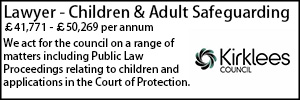Exclusions – lessons from the last academic year
Richard Freeth reviews the latest court rulings on school exclusions and provides a checklist identifying some key issues that will support decision-making.
- Details
It has been a busy year for suspensions and exclusions at every level. In the courts, Stone King has been involved in the following permanent exclusion cases in the Court of Appeal and High Court: R(RWU) v GB of A Academy and LB Southwark [2024] EWHC 2828 (Admin) and [2025] EWCA Civ 147; and R(CM) v IRP for PQR Academy Trust [2025] EWHC 1414 (Admin).
These cases looked at the interaction of the exclusions framework with Article 4 of the European Convention on Human Rights (‘Prohibition of Slavery and Forced Labour’) and the Modern Slavery Act 2015. The decisions in those cases showed that, where a permanent exclusion decision is taken in line with the statutory guidance, and is genuinely a measure of last resort, there generally will not be any infringement of Article 4 and the need to take “appropriate steps” to protect the child. The decisions were focused on the balancing exercise required under the exclusions framework to consider the needs of the excluded child, but also the impact of that child on the education and welfare of others in the school community. A child’s Article 4 rights would further be protected by the responsibilities of the local authority to step in and make suitable education available when a child is permanently excluded. It is important that headteachers, school governors and independent review panel members take into account a child’s circumstances when making a decision on exclusion – this is a requirement that already forms an important part of the statutory guidance on exclusions.
In July 2025, the Department for Education (DfE) released statistics on permanent exclusions and suspensions for the academic year 2023/24. The statistics showed a continued increase in the number of suspensions and permanent exclusions:
- In relation to suspensions, these rose by 21% to 954,952, with the most common reasons for suspension being persistent disruptive behaviour, verbal abuse or threats to an adult and physical assault on a pupil;
- In relation to permanent exclusions, these rose by 16% to 10,885, with the most common reasons being persistent disruptive behaviour, physical assault on a pupil and then verbal abuse or threats to an adult.
The DfE’s data indicated that a child was four times more likely to be permanently excluded if they were eligible for free school meals, and three times more likely if they had special educational needs.
It does not produce data on governing board reviews of permanent exclusions, but the number of parental requests for independent reviews also rose from 676 (in 2022/23) to 810 (in 2023/24). Of those reviews which were heard by an independent review panel, the panel upheld the decisions reached by the governing board in 61% of the reviews.
Whilst this means governing boards are arriving at the correct decision two-thirds of the time, there is still work to be done to ensure governors’ decisions are as robust as possible. When legally required to consider reinstating a suspended or permanently excluded pupil, governors:
- must consider both the interests and circumstances of the excluded pupil and that of other pupils, staff and the school community (paragraph 114 of the guidance); and
- should consider whether the decision to exclude the pupil was lawful, reasonable and procedurally fair – this should consider the welfare and safeguarding of the pupil and their peers, the headteacher’s legal duties, and any evidence that was presented to the governing board in relation to the decision to exclude (paragraph 124).
It is always important that school governors act, and are seen to act, impartially, and thoroughly test the evidence presented to them by both the headteacher and the parents/pupil. It will generally be necessary to ask a range of questions to ensure that governors have sufficient evidence to make a decision on the exclusion.
Decision making checklist
To assist governors, we have compiled this checklist which identifies some key issues that will support decision making on suspensions or permanent exclusions.
Lawful
For permanent exclusions:
- Is there sufficient evidence, on the balance of probabilities, to meet the threshold for permanent exclusion under paragraph 11 – i.e. a serious breach or persistent breaches of the behaviour policy and, allowing the child to remain in school would seriously harm their education/welfare or that of others in the school community?
- Is the permanent exclusion the last resort? Have alternatives to permanent exclusion been considered and rejected? If so, why?
- If the child was suspended immediately prior to the permanent exclusion, what is the new evidence to support the permanent exclusion decision?
For suspensions:
- Is there sufficient evidence, on the balance of probabilities, to show a breach, or breaches, of the behaviour policy?
For both suspensions and permanent exclusions:
- Did the headteacher get the child’s version of events prior to the decision to exclude being made? If not, are there good reasons for not doing so?
- Has a thorough investigation been carried out?
- Are witness statements available? Are they signed and dated?
- Have the circumstances of the excluded child been considered? Is there any mitigation and, if so, has that been investigated?
- Are there any Equality Act 2010 issues relevant to the suspension/exclusion – has Public Sector Equality Duty been considered? Does the child have protected characteristics which must be considered? Are any claims of discrimination being raised as part of the exclusion? Has the school made reasonable adjustments?
- Does the pupil have SEND? Has the school used its best endeavours to meet the pupil’s needs? If the pupil has an EHCP, has there been contact with the local authority in relation to an emergency annual review?
- Does the pupil have social care involvement? Have the virtual school headteacher and/or social workers been involved prior to the exclusion decision? Have either been notified of the decision?
- Is there evidence of county lines/criminal exploitation/safeguarding risks to the child?
Reasonableness
- Can you understand why the suspension/exclusion decision was taken by the headteacher? Was it within a reasonable range of responses open to the headteacher, taking account of the circumstances?
- Has the school implemented all reasonable behaviour strategies to maintain the placement (this links into consideration of the exclusion as a last resort)?
- Have parents and children been made aware of the behaviour policy’s requirements and the consequences of poor behaviour?
- Has the pupil’s treatment been similar to that received by other children involved in the same incident or previous similar incidents? If not, can the difference be justified?
Procedural fairness
- Did the headteacher inform the parents without delay and follow that communication with a decision letter which complied with the requirements of the statutory guidance?
- Did the headteacher inform other interested parties without delay – i.e. local authority, virtual school headteacher, social worker?
- Was the meeting held within statutory timescales?
This is only a summary of issues and may not be relevant in every exclusion. For further advice on suspensions or permanent exclusions, or for training for senior leaders and governors/trustees on exclusions generally, please contact me on 0121 387 3293 or
Richard Freeth is a partner at Stone King.































